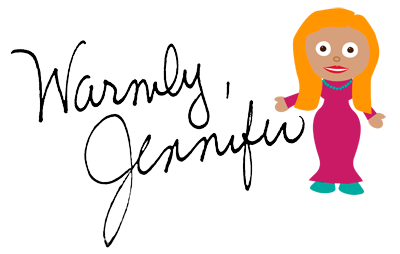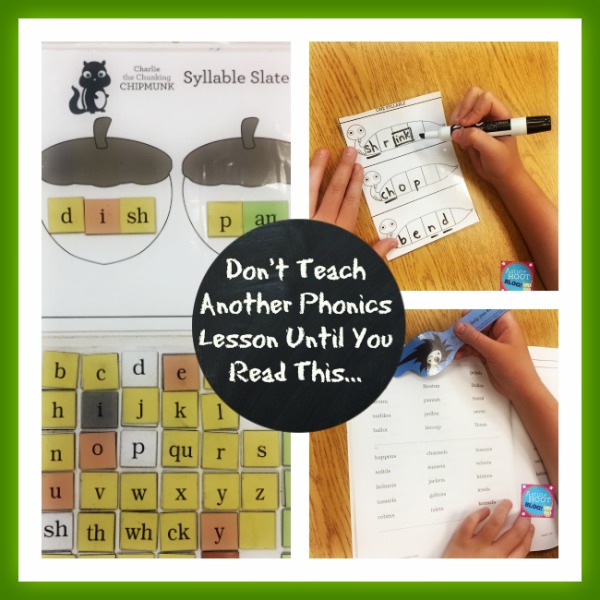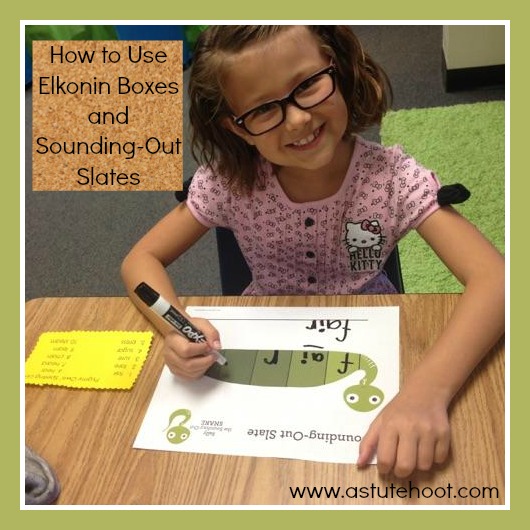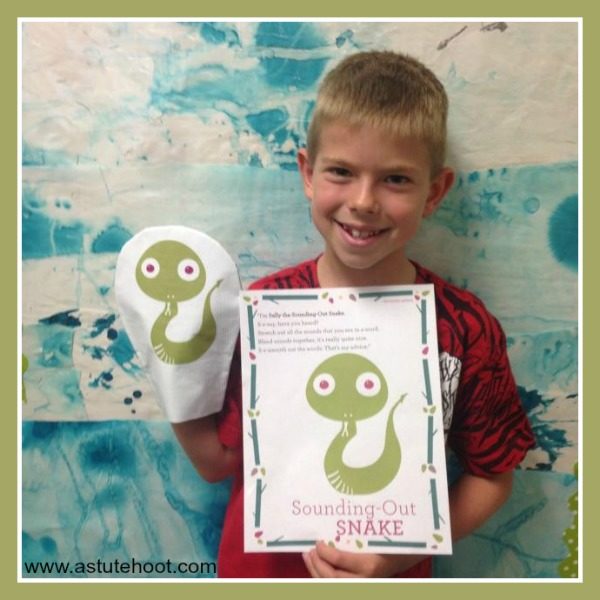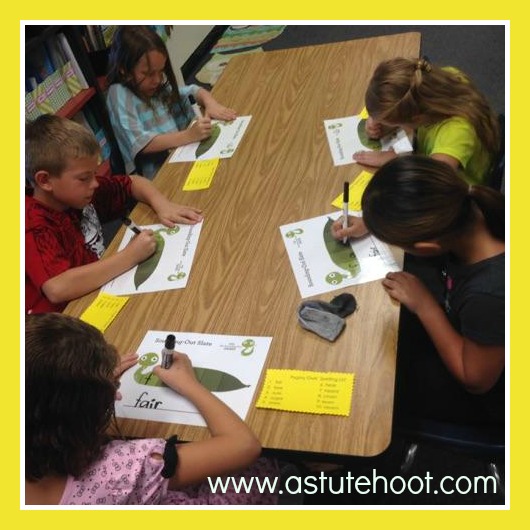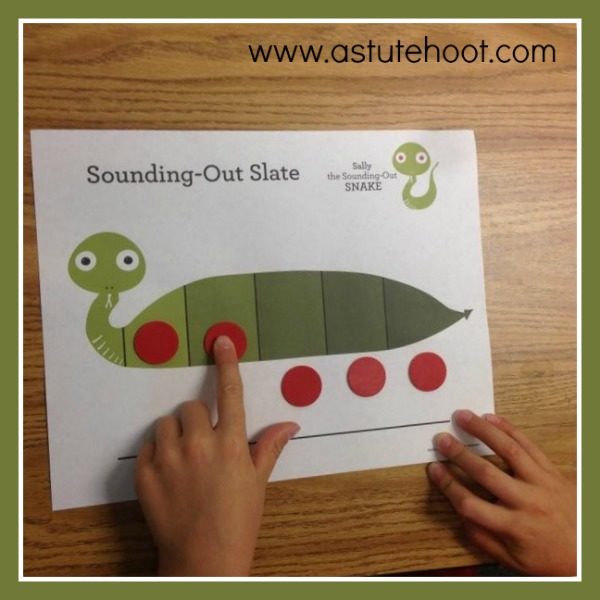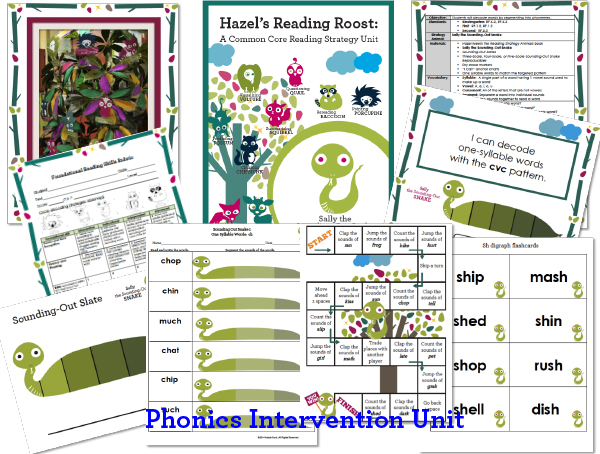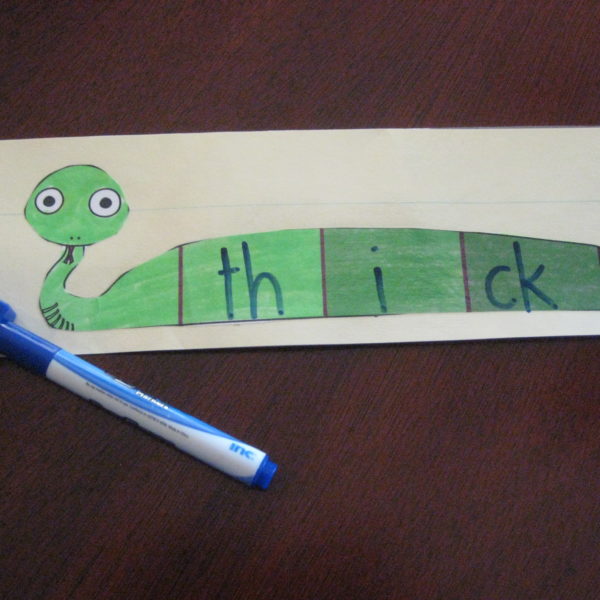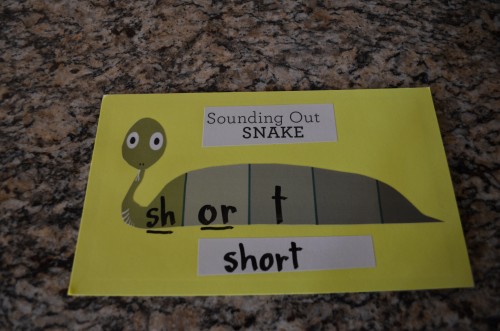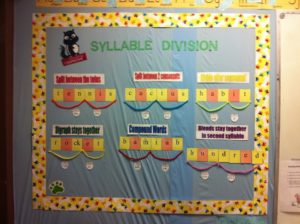Don’t Teach Another Phonics Lesson Until You Read This…
As a resource teacher, I use specialized instruction in my intervention groups to help my students meet their IEP goals as well as make progress towards grade level standards. While implementing the district prescribed intervention curriculum, Wilson Reading System, I discovered a few key things about the way students learn:
1.Systematic, direct and explicit phonics instruction is essential in helping students with learning disabilities master the alphabetic code-breaking skills needed for foundational reading proficiency.
2.Students need a thorough understanding of a range of effective strategies, as well as knowing when and why to apply them within a variety of texts (e.g., controlled decodable text, authentic literature, meaningful non-fiction texts).
3.Motivation and engagement during reading instruction is a critical ingredient to student success.
Integrating all 3 components can be a challenge at times, but I’ve found great success with supplementing Wilson with our Astute Hoot reading strategy animals. Not only do my students consistently meet their IEP goals and make significant progress on district reading assessments, they LOVE coming to reading intervention and they are engaged throughout the entire lesson! (Let’s face it…sometimes direct instruction phonics programs can get boring for students and teachers).
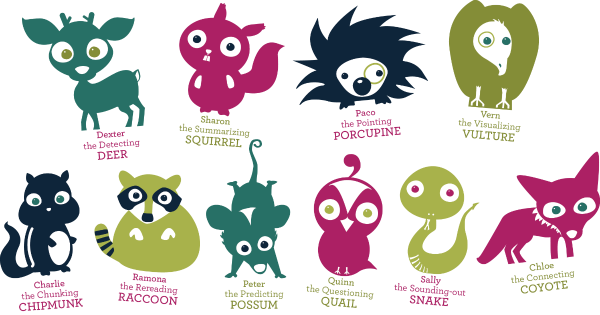 Our strategy animals and accompanying resources have also been used to supplement and enhance other reading programs such as Fundations, Harcourt, Journeys, Spalding, Sonday and Reading A-Z. In addition, they are perfect for book studies and units using authentic literature and expository text. Each lesson incorporates the following; Hands-on tools to make the strategies concrete and memorable; Animal strategy friends to motivate and engage students; A variety of texts to promote transfer and application of skills.
Our strategy animals and accompanying resources have also been used to supplement and enhance other reading programs such as Fundations, Harcourt, Journeys, Spalding, Sonday and Reading A-Z. In addition, they are perfect for book studies and units using authentic literature and expository text. Each lesson incorporates the following; Hands-on tools to make the strategies concrete and memorable; Animal strategy friends to motivate and engage students; A variety of texts to promote transfer and application of skills.
Here’s how I teach reading in my K-4 resource room:
- At the start of the year, I introduce the reading strategy animals to the students by reading Hazel Meets the Reading Strategy Animals and showing students our introductory video below to get them excited. Hazel Hoot, an adorable green screech owl, is a struggling learner as she lacks the strategies needed to help her succeed. In our charming book, Hazel stumbles upon a magical tree in the forest. Out of the tree appear 10 colorful woodland animals that each introduce a research-based, standards-aligned reading strategy. These animals guide Hazel to become a proficient reader.
- I break down the 10 step Wilson Lesson by practicing the procedures and routines for one block at a time per session. I use the reading strategy animals to help teach each part. Once students students understand the routine for each block, we combine multiple blocks in our lessons.
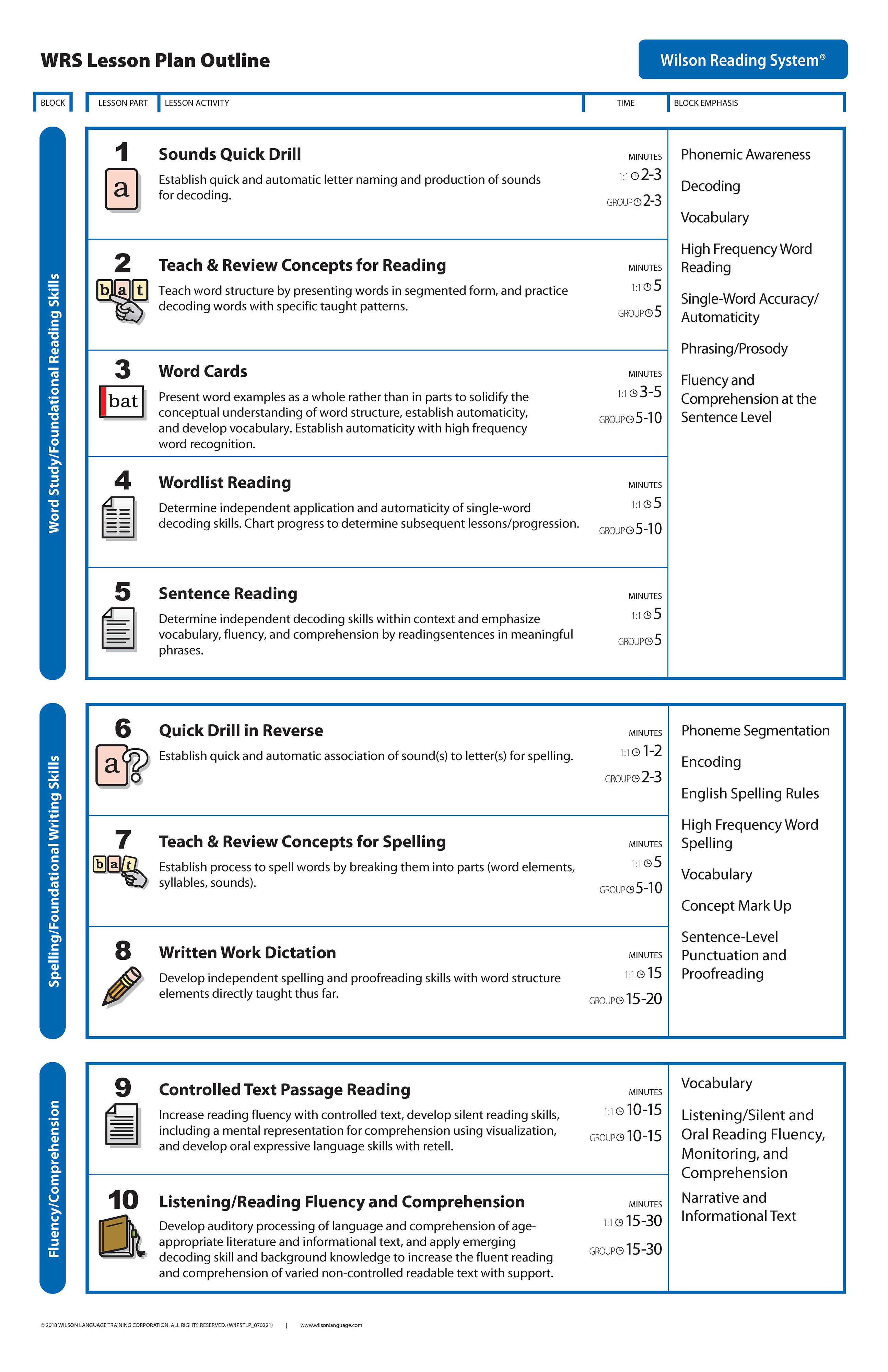
- Authentic text is selected to incorporate into our weekly lessons to provide students the opportunity to apply their strategies in meaningful and relevant ways. Currently, I’m using a variety of books from National Geographic Kids to boost their skills in reading informational text.
Check out our reading strategy animals in action!
I laminated our Sally Sounding-Out Snake and Charlie Chunking Chipmunk graphic organizers and use them as part of Warm-Up Work at the start of each session. I just post 3 words on the board and students segment (one-syllable words) or syllabicate (multi-syllable words) and mark them as appropriate. I love that this is pretty much NO PREP and it is a perfect time to review concepts with which students struggled in the previous lesson or preview concepts for the upcoming lesson.
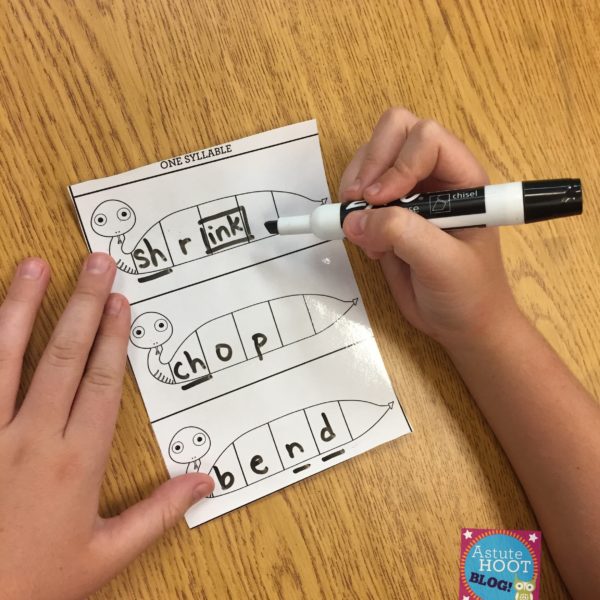
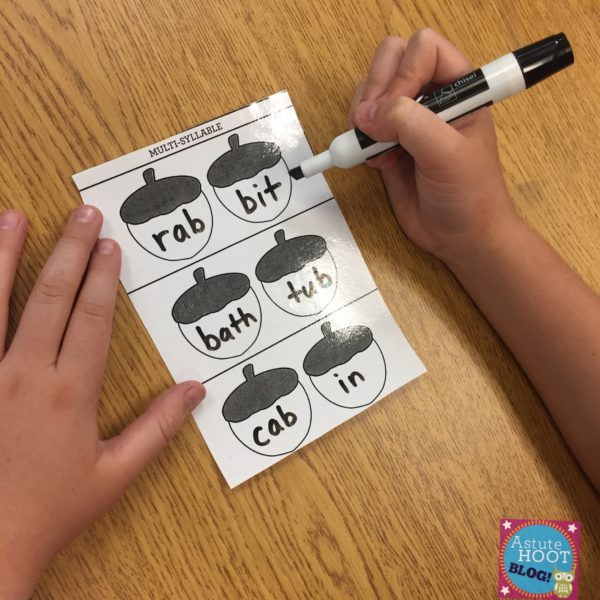
Students love using Paco the Pointing Porcupine for Quick Drill and Quick Drill in Reverse to name letters and sounds! The hands-on tools keeps them focused and on task. Paco also helps students with keeping their place during wordlist reading in the Wilson Student Readers.
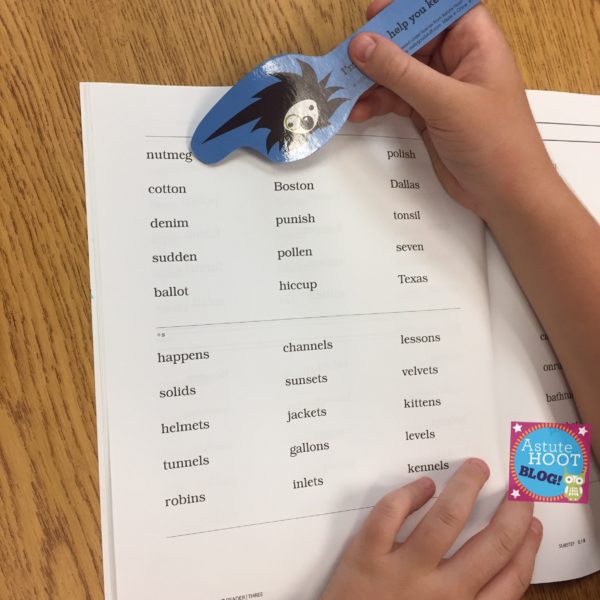
Using the Sally Sounding-Out Snake and Charlie Chunking Chipmunk Slates on the magnet letter boards provides a great visual support to help students with segmenting and syllabication. They always want to make Sally and Charlie proud of their awesome reading skills!
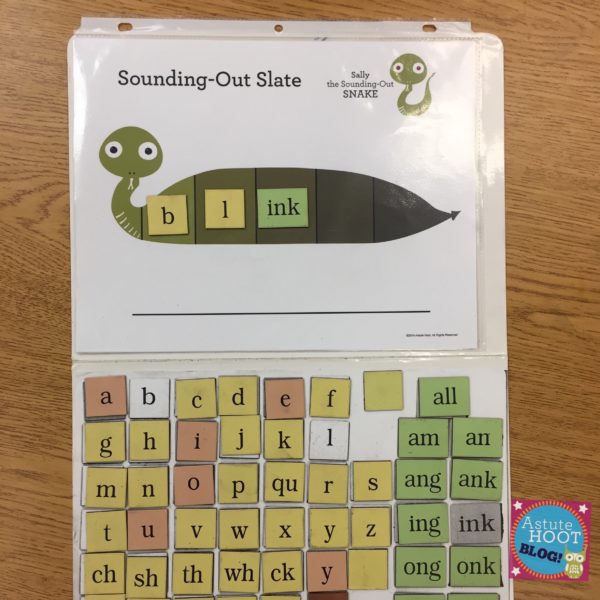
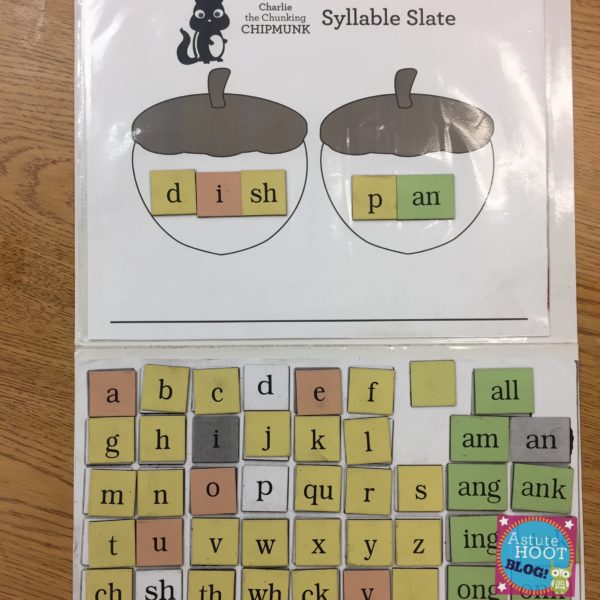
Ramona the Re-Reading Raccoon keeps students motivated when reading students to build fluency and accuracy.
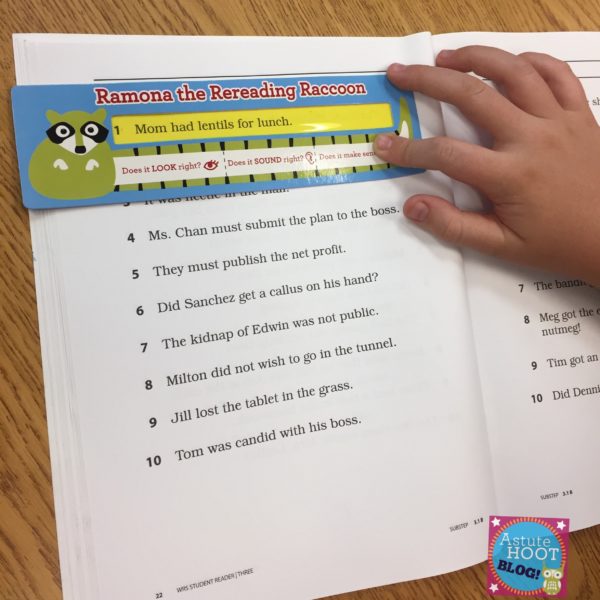
Sharon the Summarizing Squirrel is a student favorite! Students use her “Tell the Tale” tool to touch each story element when we retell the story verbally. A non-fiction version which includes main idea and details is also available.
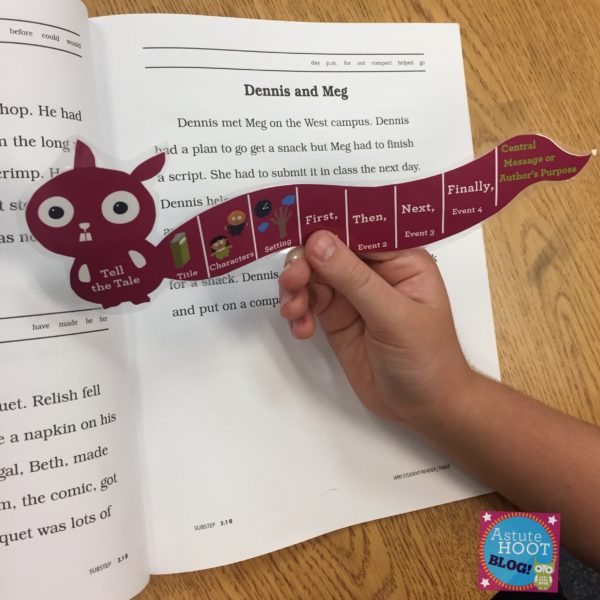
Vern the Visualizing Vulture helps students master key vocabulary words by prompting students to visualize the meaning of the word and drawing a picture of of their visualizations.
Lastly, I posted the strategy posters and “I Can” statements on a bulletin board for easy reference for students. Our “I Can” statements are aligned to IEP goals and state standards, as well as to a specific reading strategy.
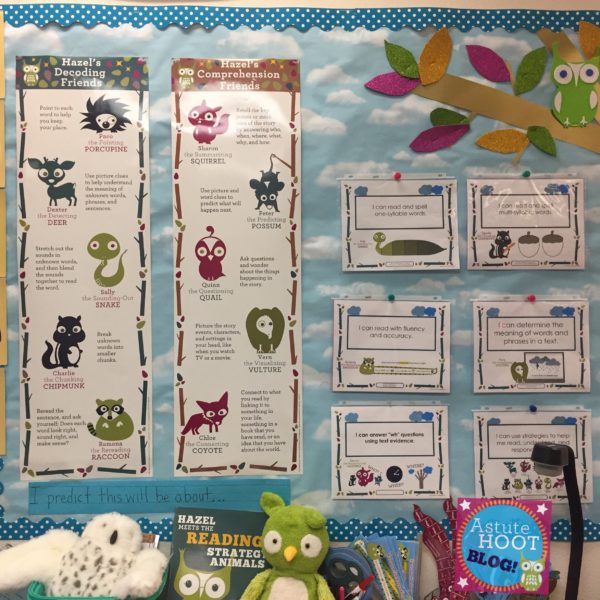
Read more about our strategy animals here! Astute Hoot’s unique cast of strategy animals make learning safe and fun while teaching critical strategies in a child-friendly way. Students make an immediate connection to the animals and relate to Hazel’s struggles. These delightful animals and rhymed text motivate the most reluctant readers. Our books, posters and hands-on tools are available for purchase here via digital download including printable do-it-yourself options of our tools. Ready made tools and posters are available as intervention kits here.
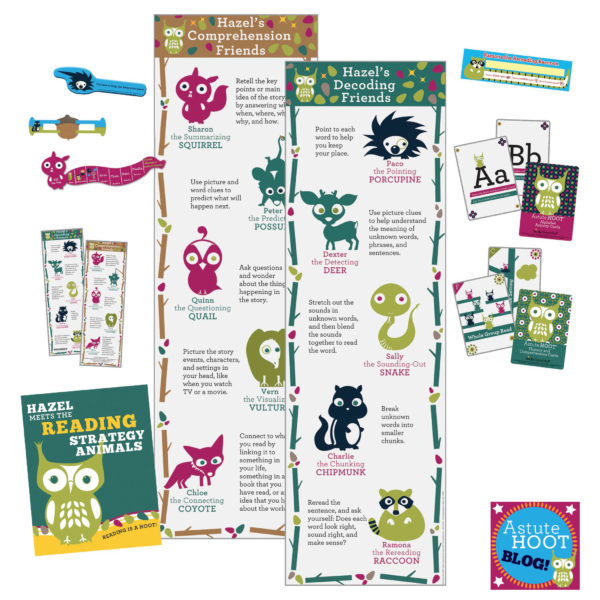
I’d love to hear how you make phonics fun and engaging! Check out some other special education blogs here:
